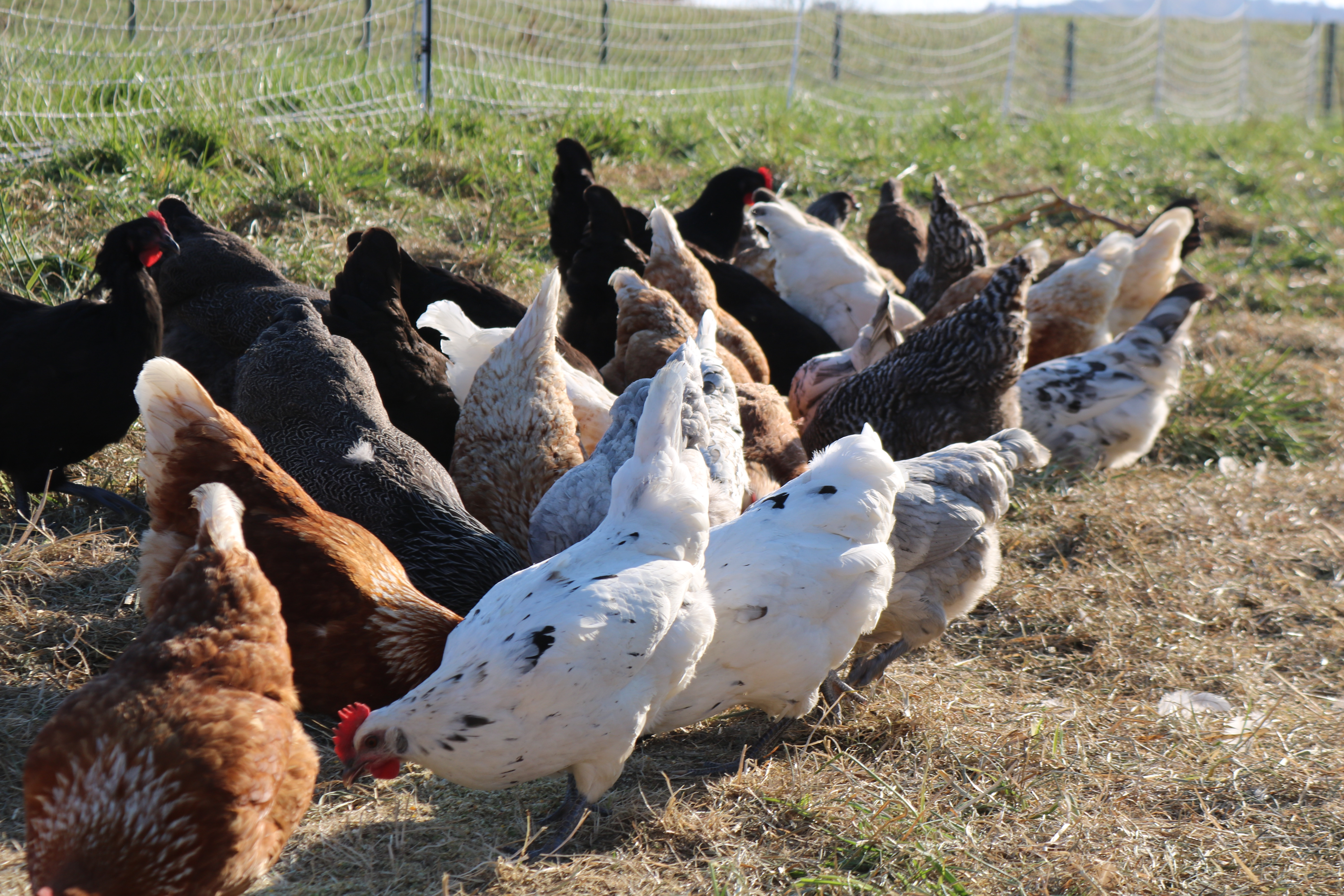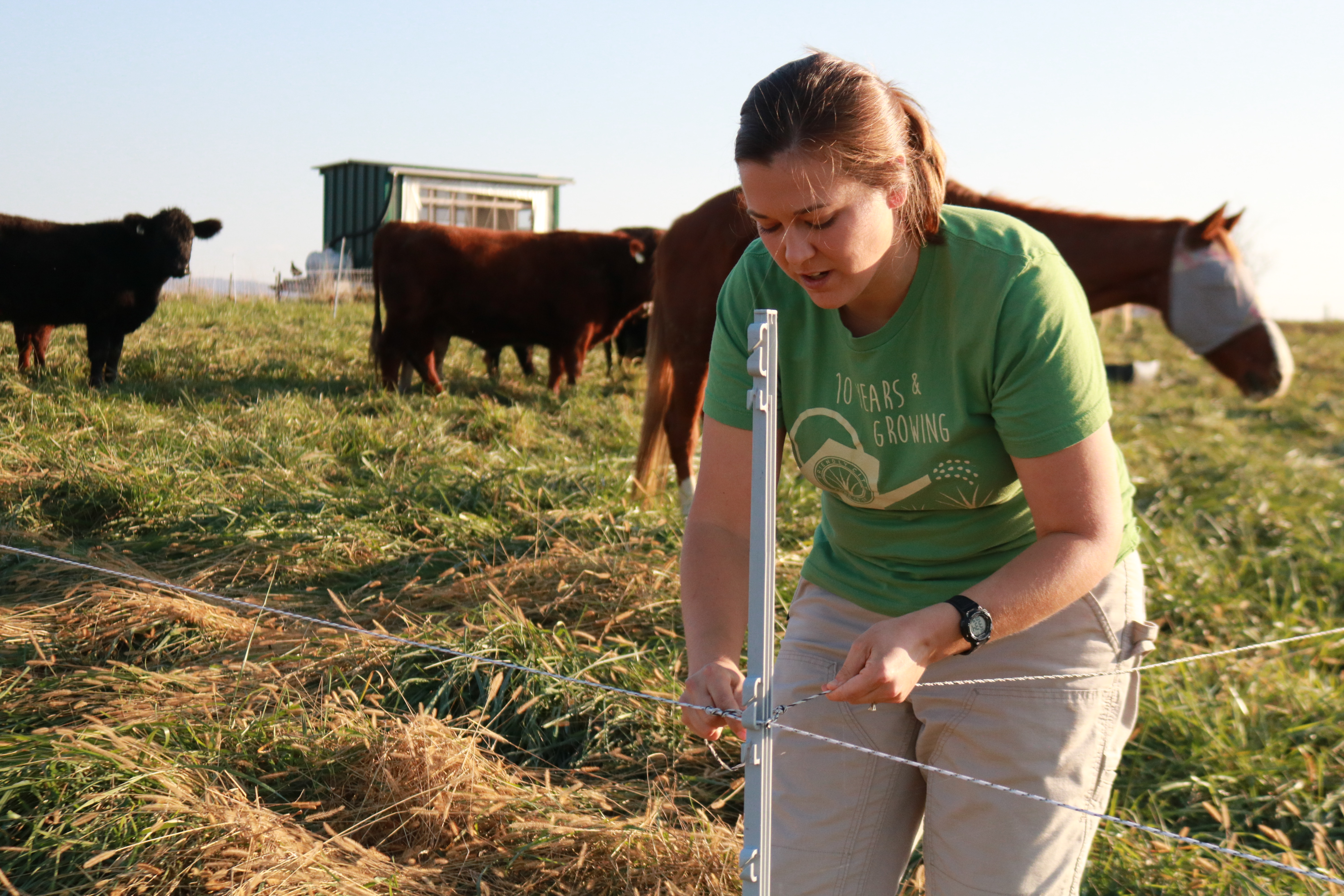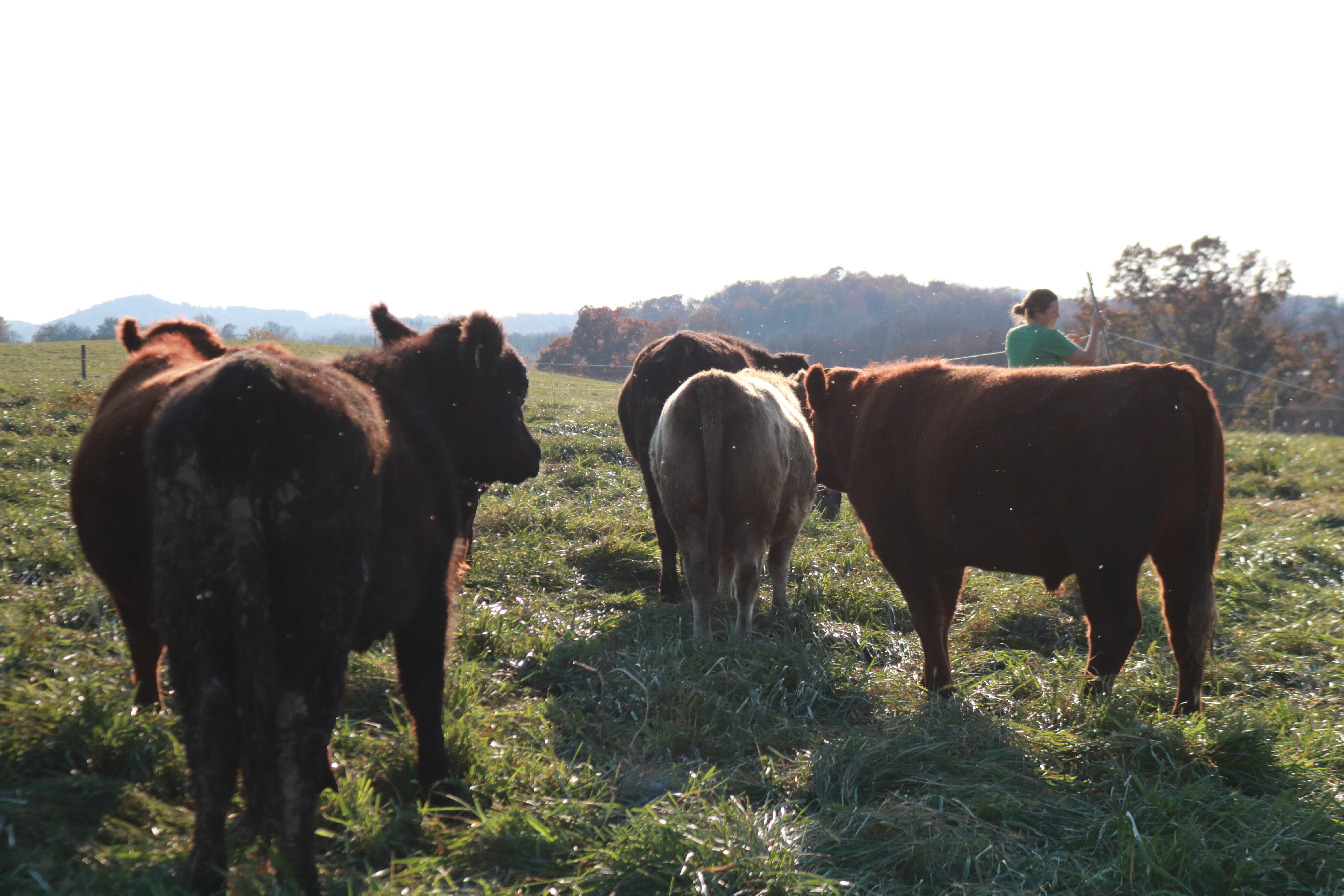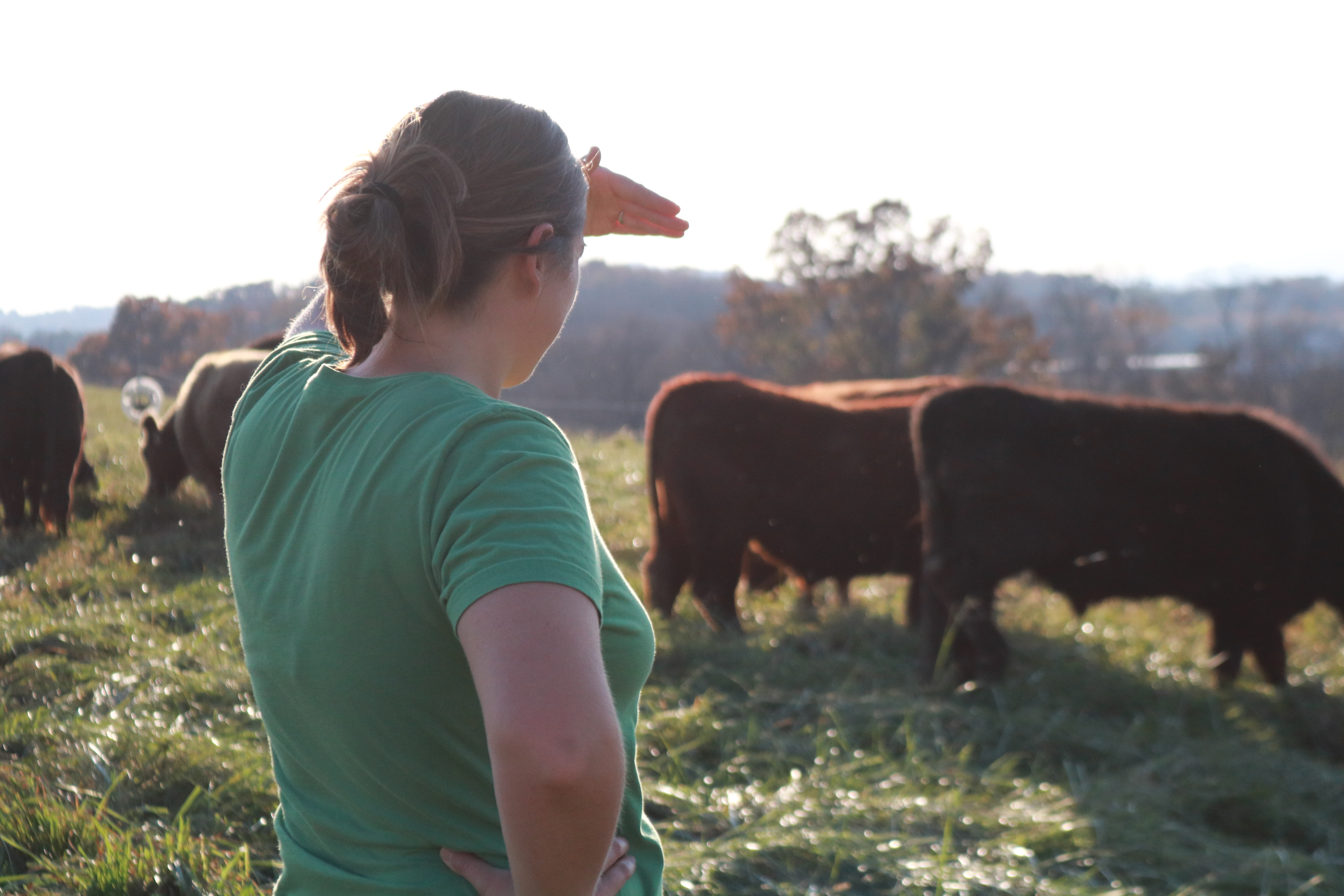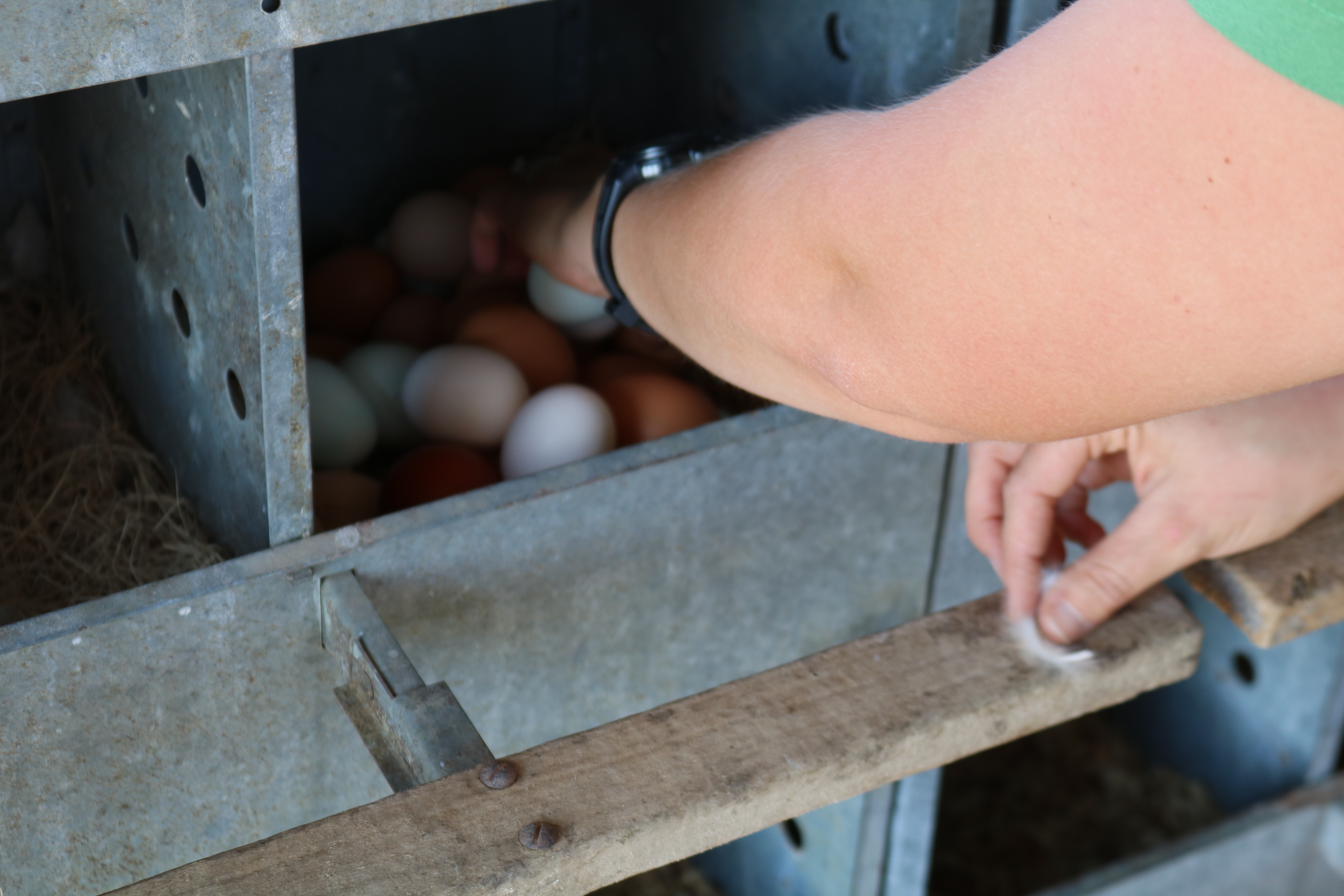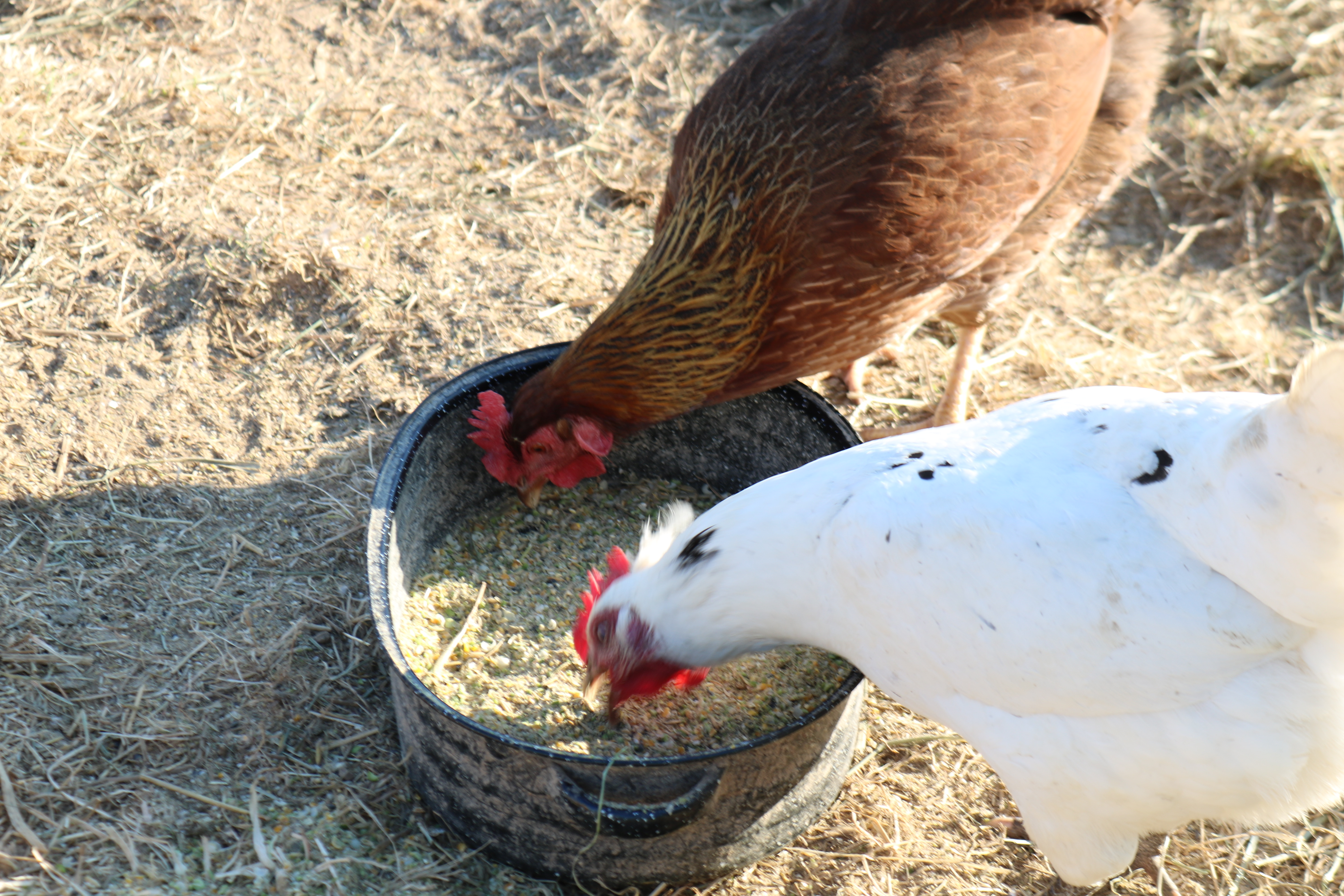Learn More About Good Plains Farm!
Kelly Hilliard didn’t always know she wanted to take over her grandfather’s farm. But after graduating with a degree in Agriculture and Life Sciences at Virginia Tech, she knew she didn’t want to be funneled into a job in industrial agriculture.
She said that her educational experience taught her that industrial agriculture was not harmful even when using pesticides, herbicides and other chemicals and she only took one class that pushed back on that narrative.
“I started to unlearn a lot of what I'd been taught,” she said. “Learning why the soil microbes are important and how chemicals can be detrimental, and how animals being able to express themselves naturally, on pasture, in sunlight and fresh grass not only was good for them, but it also made a healthier product for humans as well.”
Hilliard remembers spending time with her grandfather in the summer helping to tend the farm and picking sweet corn early in the morning.
Over time, after graduating college and working at a hatchery for a family friend, she decided taking over the farm was something she wanted to tackle.
“I really got the thought in my head that our farm could be transformed is after reading "You Can Farm" by Joel Salatin,” Hilliard said. “I had a discussion with my parents who after my grandfather’s passing became owners of half of the farm.
Good plains farm, located in the Shenandoah Valley, is a farm that’s been passed down from generation to generation. Although Hilliard didn’t originally imagine herself becoming a farmer, she capitalized on the opportunity when it presented itself.
Owning the farm as of 2017, Hilliard is running the farm all by herself. Doing it all on her own, with voluntary help from her family, Hilliard has learned about regenerative farming from her own admission. Researching it, and seeing what other farmers were doing on their own farms in the area, Hilliard started implementing her own regenerative farming practices.
I feel very fortunate however to be surrounded by a very supportive and loving family,” she said. “My mom, dad, and husband do help me when they can.”
“Our goal is to improve the overall land through the biodiversity of plant and animal life and mimicking the wild herbs that once moved across the Great Plains in tight packs. To do this, we use rotational grazing methods to create nutrient-dense meat that is high quality and delicious.”
Continuous grazing and crop growing were done by Hilliard’s grandfather prior to her attaining the farm but now, she practices rotational grazing. This means that Hilliard moves her grazing cattle every day all throughout her land and in between grazing sessions she allows for the land that the cattle were previously on to rest and recover. She said that once she moves her cattle from a specific place, she lets the land stay cattle-free for at least 30 days.
Her grandfather’s way of grazing, continuous grazing, let the cattle stay in one area for an undeclared amount of time and didn’t give his land any time to rest or recover — making crop preservation and growth more difficult.
Hilliard has utilized the practice of rotational grazing for the past three years and has already noticed a tremendous difference. The edible part of the pasture forage plant has begun to flourish.
“It's such an exciting thing!” she said. “I have such a feeling of accomplishment seeing what can be done with a little extra manual work, but mostly, the animals do the work.”
Hilliard said that “regenerative agriculture is making more of what is there than was before.” She also claims that it’s not only beneficial short term, but long term as well. Regenerative farming techniques lend themselves to growing healthier, tastier food. Hilliard said that while it is more work to implement these regenerative practices, the outcome is worth the time commitment. Hilliard also said that regenerative farming has more growth potential than traditional farming methods.
Hoping to leave the farm better than when she found it, and leave it for future generations to come, Hilliard said that she named the farm “Good Plains,” cleverly integrating her maiden name, as a way to recognize her family and as a promise to make the land better than it was before.
